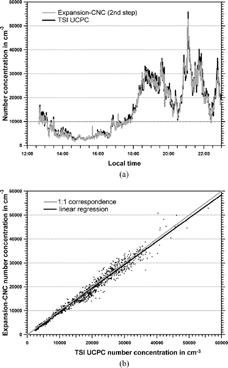Figures & data
FIG. 1 Dependence of Saturation ratio after expansion with temperature before expansion according to Equations (Equation1) and (Equation2) (solid curve). Kelvin diameter versus temperature before expansion for a given saturation ratio according to Equation (Equation3) (dotted curve) for water.
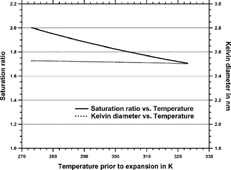
FIG. 2 Schematic diagram of scattered light detection with the Expansion-CNC. Particles inside an expansion chamber scatter incoming laser light. The direct light beam and the scattered light in the forward direction between 0° and 1.1° are blocked. Scattered light that hits the annular area of a lens between 1.1° and 4.4° (shaded area) is collected and focused onto a photo diode detector.

FIG. 3 Diagram of the Expansion-CNC. The dotted rectangle depicts the optical part of the instrument that is usually covered by a light-absorbing box.
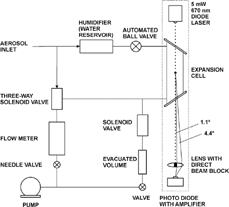
FIG. 4 Comparison of experimental (a) and theoretical (b) scattered light intensity. The vertical lines indicate the maximum and the minimum of the third step, respectively.
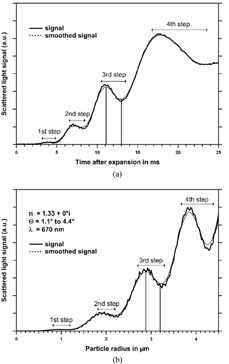
TABLE 1 Radius range at which a step can be observed and the corresponding average total and partial scattering cross section
FIG. 6 Comparison of measured and modeled curve for two different number concentrations. Modeled curve is calculated for monodisperse particles.
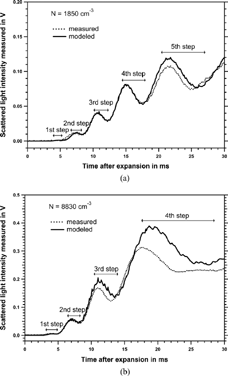
TABLE 2 Concentration ranges that can be measured with a certain step
FIG. 7 Comparison of measured and modeled curve for an extinction experiment. Observed and modeled ripple structures are in very good agreement. For clarity the modeled curve is shifted upwards by 0.003.
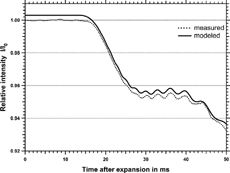
FIG. 8 Comparison of the number concentration measured by the Expansion-CNC and by the TSI UCPC for two lab-generated aerosol types.
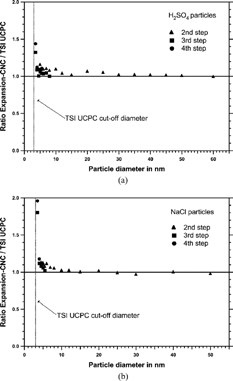
FIG. 9 Comparison of the number concentration measured by the Expansion-CNC and by the TSI UCPC for ambient aerosol particles.
